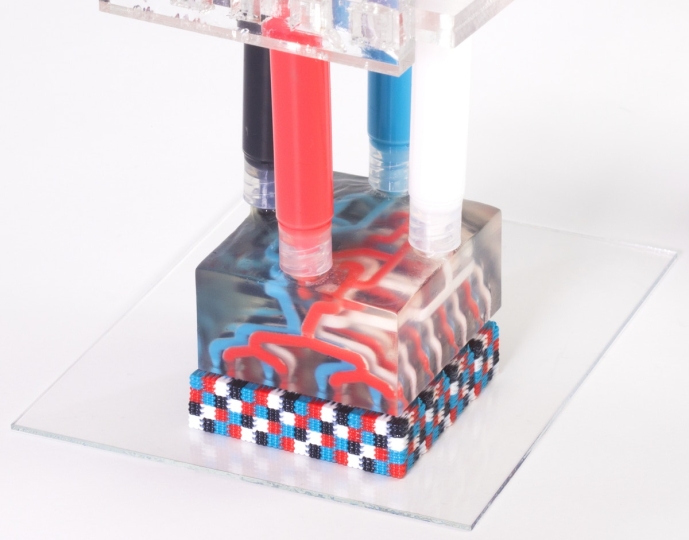2019/11/11 スウェーデン王国・リンショーピング大学
・ リンショーピング大学、Research Institutes of Sweden(RISE)およびリンショーピング大学ノルショーピン校が、100 個を超える電気化学トランジスタを搭載した集積回路のプリント作製に初めて成功。
・ 同集積回路プリントには、工程の少ないスクリーンプリンティング(シルクスクリーン)技術を採用。この手法では、プリントした層が正確な位置にあることが重要。
・ プリントインクには、世界の有機エレクトロニクス分野で盛んに研究された PEDOT:PSS ポリマーを使用。
・ 本研究は、過去 17 年間にわたり、スウェーデン戦略研究財団(SSF)やスウェーデンイノベーションシステム庁(VINNOVA)等の様々な組織から研究資金を受け、近年では Eureka Eurostars Prolog プロジェクトを通じて EU も関与。シルクスクリーンによるプリンテッド電子回路の最初のブレイクスルーは同 Prolog プロジェクトによるもので、2017 年に研究結果を発表している。
・ それ以降、電子回路サイズの縮小、回路の全トランジスタのほぼ 100%作動を可能にするような品質の向上、そして信号処理や周囲との通信の役割を担うシリコンベース回路との統合の、3 つの課題に対処してきた。
・ プリンテッド電子回路では、従来型のシリコンベース電子構成部品とのインターフェースが作製できることが利点の一つ。本研究では、有機電気化学トランジスタベースのプリンテッド電子回路を数タイプ作製した。
・ そのうちのシフト-レジスタは、シリコンベース回路とセンサーやディスプレイ等のコンポーネント間のインターフェースを形成して接続する。少ないコンタクトにより、小面積でより安価なシリコンチップの利用が可能となる。・ 細い線がプリントできるインクの開発とスクリーンプリンティングフレームの向上により、小型化プロセスの実現だけでなく、高品質も達成。現在では A4 サイズのプラスチック基板に 1,000 個超の有機電気化学トランジスタを配置でき、それらを様々に接続して多様なプリンテッド集積回路を作ることができる。
・ このような大規模集積回路(LSI)は、例えばエレクトロクロミックディスプレー(プリンテッドエレクトロニクスとして製造可能)や、IoT によるオンライン電子機器等の作動に使用できる。
URL: https://liu.se/en/news-item/integrerade-kretsar-produceras-i-tryckpress
(関連情報)
Nature Communications 掲載論文(フルテキスト)
All-printed large-scale integrated circuits based on organic electrochemical transistors
URL: https://www.nature.com/articles/s41467-019-13079-4
<NEDO海外技術情報より>
Abstract
The communication outposts of the emerging Internet of Things are embodied by ordinary items, which desirably include all-printed flexible sensors, actuators, displays and akin organic electronic interface devices in combination with silicon-based digital signal processing and communication technologies. However, hybrid integration of smart electronic labels is partly hampered due to a lack of technology that (de)multiplex signals between silicon chips and printed electronic devices. Here, we report all-printed 4-to-7 decoders and seven-bit shift registers, including over 100 organic electrochemical transistors each, thus minimizing the number of terminals required to drive monolithically integrated all-printed electrochromic displays. These relatively advanced circuits are enabled by a reduction of the transistor footprint, an effort which includes several further developments of materials and screen printing processes. Our findings demonstrate that digital circuits based on organic electrochemical transistors (OECTs) provide a unique bridge between all-printed organic electronics (OEs) and low-cost silicon chip technology for Internet of Things applications.



